Unlike the core of most states that are relatively defensible, core Russia is limited to the region of the medieval Grand Principality of Muscovy. It counts no rivers, oceans, swamps or mountains marking its borders — it relies solely on the relatively inhospitable climate and its forests for defense.
To deal with these vulnerabilities, Russia expanded in three phases. In the first, Russia expanded not toward the invasion corridors to establish buffers but away from them to establish a redoubt. In the late 15th century, under Ivan III, Russia did creep westward somewhat, anchoring itself at the Pripet Marshes, which separated Russia from the Kiev region. But the bulk of Russia’s expansion during that period was north to the Arctic and northeast to the Urals. Very little of this territory can be categorized as useful — most was taiga or actual tundra and only lightly populated — but for Russia it was the only land easily up for grabs. It also marked a natural organic outgrowth of the original Muscovy — all cloaked in forest. It was as defensible a territory as Russia had access to and their only hope against the Mongols.
The Mongols were horsemen who dominated the grasslands with their fast-moving cavalry forces. Their power, although substantial, diminished when they entered the forests and the value of their horses, their force multipliers, declined. The Mongols had to fight infantry forces in the forests, where the advantage was on the defender’s side.
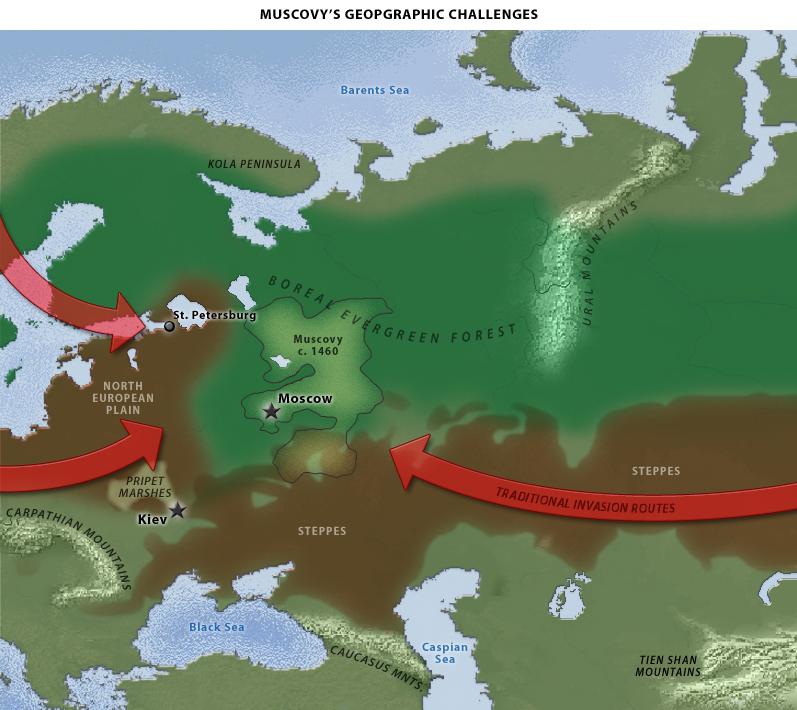
The second phase of Russia’s expansion was far more aggressive — and risky. In the mid-16th century, Under Ivan IV, Russia finally moved to seal off the Mongol invasion route. Russia pushed south and east, deep into the steppes, and did not stop until it hit the Urals in the east and the Caspian Sea and Caucasus Mountains in the south. As part of this expansion, Russia captured several strategically critical locations, including Astrakhan on the Caspian, the land of the Tatars — a longtime horse-mounted foe — and Grozny, which was soon transformed into a military outpost at the foot of the Caucasus.
Also with this expansion, Ivan IV was transformed from Grand Prince of Moscow to Tsar of All Russia, suggesting the empire to come. Russia had finally achieved a measure of conventional security. Holding the northern slopes of the Caucasus would provide a reasonable defense from Asia Minor and Persia, while the millions of square kilometers of steppes gave birth to another defensive strategy: buffers.
Russia — modern, medieval or otherwise — cannot count on natural features to protect it. The Pripet Marshes were small and could in many cases simply be avoided. There is no one who might wish to attack from the Arctic. Forests slowed the Mongol horsemen, but as Muscovy’s predecessor — Kievan Rus — aptly demonstrated, the operative word was “slowed,” not “stopped.” The Mongols conquered and destroyed Kievan Rus in the 13th century.
That leaves buffers. So long as a country controls territory separating itself from its foes — even if it is territory that is easy for a hostile military to transit — it can bleed out any invasion via attrition and attacks on supply lines. Such buffers, however, contain a poison pill. They have populations not necessarily willing to serve as buffers. Maintaining control of such buffers requires not only a sizable standing military for defense but also a huge internal security and intelligence network to enforce central control. And any institution so key to the state’s survival must be very tightly controlled as well. Establishing and maintaining buffers not only makes Russia seem aggressive to its neighbors but also forces it to conduct purges and terrors against its own institutions in order to maintain the empire.
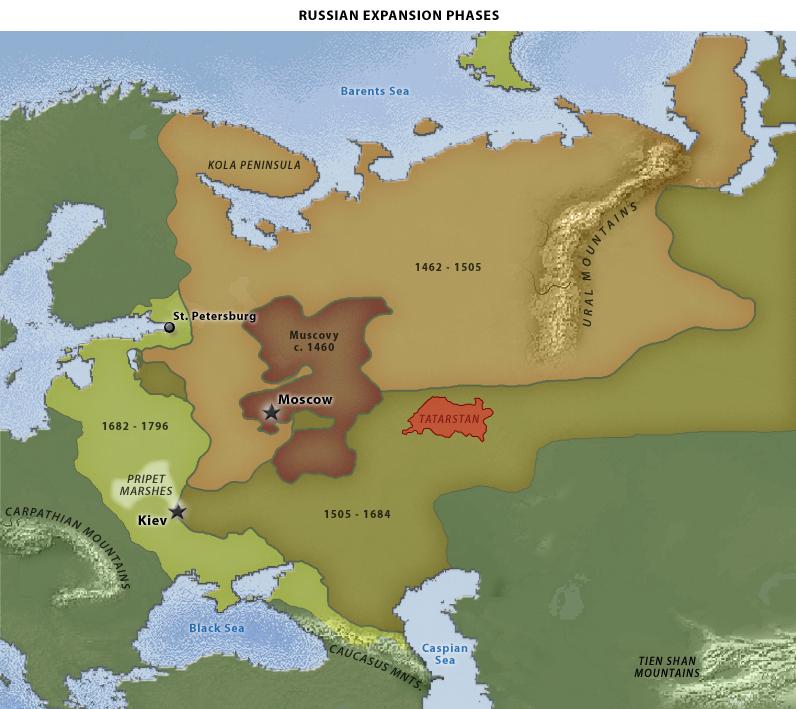
By the end of World War II, the Soviet Union — a constitutional assembly of socialist republics in existence since 1922 — had come to encompass a massive amount of territory. Covering what would later be known as the Warsaw Pact (the Soviet counteralliance to NATO), the Iron Curtain fell across a vast swath of Eurasia, providing Moscow with immense strategic depth — more than it had ever controlled before, or has controlled since.
To the south
and southwest, the Kremlin commanded critical geographic buffers like the
Caucasus and Carpathian mountains, and to the west, where there were no
such mountain barriers, the North European Plain offered an effective defense
in depth. Moscow was more than 1,000 miles from NATO’s front lines, and
these geographic circumstances — along with the long-standing realities
of Russian geopolitics
— favored
land forces. Hence the Red Army, in its many forms, has traditionally been
the pre-eminent branch of the Russian military.
At the end of World War II, the Soviets commanded a vast wartime industrial machine. The demographic, agricultural and industrial strengths of the western Soviet republics and Eastern Europe meant that Moscow was positioned to sustain an enormous military well after the conclusion of the Great Patriotic War — and it proceeded to do just that.
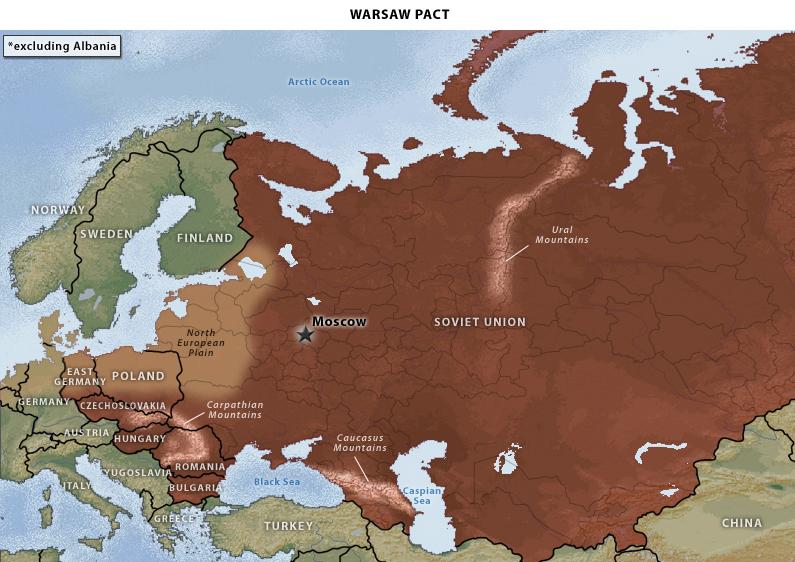
These two factors, geography and industry, were deeply interrelated and interdependent. The vast territory required a vast military to defend it. The perennial Russian problem of long, indefensible borders had not been solved by the creation and expansion of the Warsaw Pact; the borders had simply been pushed out to a more comfortable distance from Moscow, to include actual geographic barriers to invasion, such as mountain ranges. Further complicating matters was Russia’s second perennial problem: poor transportation infrastructure — not just bad roads and a limited rail network, but terrain on which it was difficult to build infrastructure and the lack of a river system conducive to commerce.
These problems continue to plague Russia. Unable to quickly move large forces and their equipment across the country — even today, Russia spans nearly the entirety of the Eastern Hemisphere — Russia must disperse large, standing military units around the country. While Russia’s focus has always been westward, it maintains a significant, if at times neglected, presence in the Far East. Meanwhile, the territory that provided Moscow with strategic depth required extensive internal security apparatuses to quell dissent. These widely dispersed forces depended on the people, agriculture and industry of the newly acquired territories for sustenance.
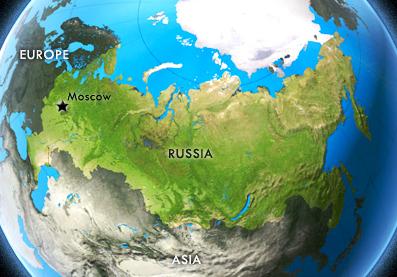
Nevertheless, by the end of World War II it looked as though the stars had finally aligned for Russia. The Soviet Union would became so militarily powerful that Europe — and the combined forces of NATO — trembled at the prospect of a Soviet invasion from Russia, rather than the reverse (which had historically been the case).
Naturally, this newfound power made deep and lasting impressions on military thinking in Russia. It reinforced deep-seated Russian conceptions of strategy that figured in terms of overwhelming numbers, where quantitative superiority compensated for qualitative inefficiencies. The military continued to be organized to carry out large, coordinated maneuvers that demanded strict adherence to higher command. Quantitative superiority dictated a large, conscripted force of necessarily young, poorly educated soldiers with limited training, and equipment and organization had to account for this.
At the same time, the military continued to be the primary, privileged beneficiary of the entire Soviet economy — and remained so for the remainder of the union’s existence. This put immense resources at the Kremlin’s disposal, so immense that military thinking began to be taken to a perverse extreme. By the time the Berlin Wall fell in 1989, Moscow had more than 50,000 main battle tanks deployed west of the Ural Mountains — so many that it is doubtful the Soviet Union could have provided sufficient gasoline to fuel the much-feared invasion of Western Europe. But even then, in terms of the size of the military and the territory it occupied, Soviet military strength was very real.
When the Berlin Wall came down, the floor collapsed under the Soviet Union, which ceased to exist in 1991. Soviet territory contracted to the borders of Russia proper. On the North European Plain, the border retreated from the Elbe River in Germany to a point less than 100 miles from St. Petersburg. Moscow found itself 250 miles from an independent Belarus and less than 300 miles from an independent Ukraine. Russia also lost the demographic, agricultural and industrial capacity of Eastern Europe and the western republics that had helped sustain the enormous Soviet war machine.
But this was only the beginning. In 1991, the utter devastation of Iraq’s military at the hands of U.S. and NATO forces undermined the credibility of the Soviet military model. At the time, far from the weak military for which Iraq has come to be known, the Iraqi military was among the largest in the world. Its troops were battle-hardened from nearly a decade of war with Iran — and they were equipped with Soviet hardware and followed basic Soviet doctrine. Desert Storm called into question the central tenets of Soviet military thinking, leaving a Russian military awash in problems and uncertain of even its most basic assumptions.
Meanwhile, then-President Boris Yeltsin began to build inefficiency and incoherence into the Russian military in order to forestall a military coup (though he was hardly the first Russian leader to do this). Decay and disarray gripped all of Russia. The military itself began to rust and atrophy, even as it entered into the first bloody and protracted civil war in Chechnya. The ruble experienced what can only be described as a free fall. Birth rates declined dramatically. Former Warsaw Pact allies — and even former Soviet Socialist Republics — began to be accepted as full members of NATO. Everything that had made the Soviet Union geographically secure, and much of what had made the Soviet war machine possible, was no longer Moscow’s.
Thus, the perennial Russian problem of insecurity and vulnerability to invasion was profoundly complicated by the rapid retraction of territory at the same time that basic subsistence for the military was becoming a problem. The Russian military was simply no longer capable of defending what limited (yet still vast) territory it was responsible for, to say nothing of meaningful offensive or expeditionary capability.
This situation was not just a massive blow to the Russian military — it also imposed a strange new reality for which long-standing Soviet military doctrine was completely unprepared. The underlying structure of the military, in other words, was in complete disarray just at the moment when the military, as an institution, had to grapple with completely new circumstances and challenges.
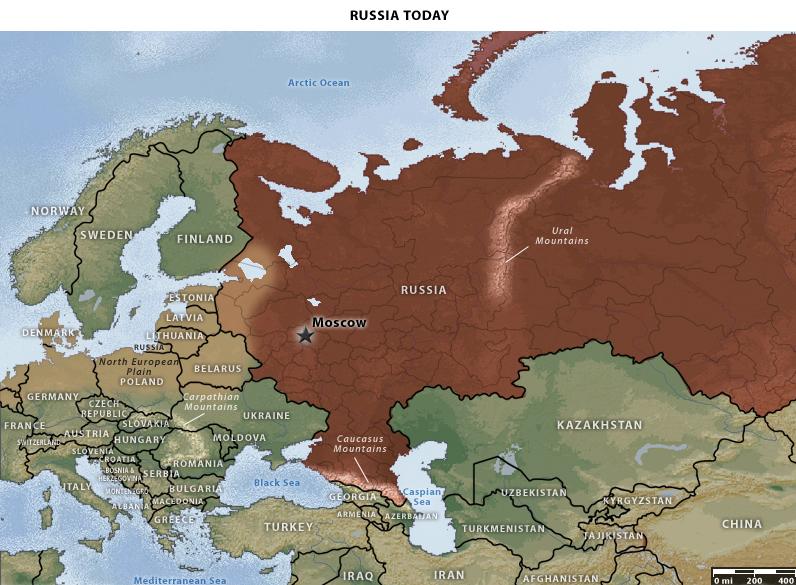
In dealing with the situation, the Kremlin came to rely increasingly on its nuclear arsenal as the guarantor of territorial integrity. Observers of Russian training exercises began to note the simulated use of nuclear weapons to stem the tide of an invasion. In these scenarios, Russian forces fight qualitatively superior forces in a slow retreat culminating in the use of tactical nuclear weapons to hold the line.
Weak points in the Russian deterrent certainly remain — its ballistic missile submarines hardly ever conduct patrols, and the bulk of its deliverable warheads are carried aboard aging Soviet-era heavy intercontinental ballistic missiles. But there is also little doubt that Moscow retains a modern nuclear capability. Russia continues to field a very sizable arsenal that includes established missile designs that work, even as it continues to toy with maneuverable re-entry vehicles and penetration aids to improve its capability against ballistic missile defenses.
Russia’s nuclear posturing — especially its defensive exercises — was thus a message to the West to not try anything, even though the conventional Russian military appeared weak. But it was also a warning of how Moscow would be forced to escalate matters if it felt threatened. The nuclear arsenal became the trump card that the Kremlin clung to in an increasing number of defensive scenarios. In reality, the Kremlin no longer had any offensive scenarios.
This obviously was not a tenable position for Russia, and the need to reconstitute conventional military forces was clear. But this would take time. It was only when Vladimir Putin came to power in 1999 and began to consolidate control over the country that the Kremlin could stop fretting about a military coup and begin to think seriously about meaningful military reform. In other words, the power of Putin allowed the Kremlin, for the first time since the Cold War, to begin strengthening the military. Soon, however, the process of reform began cutting against the grain of the military’s old guard, so the challenge was to strengthen the military from the outside despite the best efforts of the military itself.
Even under the most optimistic of scenarios, Russia will never rebuild the Soviet army. The Kremlin simply lacks the capacity to sustain an army large enough to compensate for the profound geographic disadvantages Russia faces in the 21st century. Although a mass military is no longer feasible, however, Russia’s borders and transportation constraints are even more problematic than they were during the Soviet era. The only rational solution is to push for increasingly mobile and agile military units.
Russia will not embrace this reality completely; it will likely retain some semblance of a large military, including a great number of conscripts. But Russia is attempting to build more agile units, to be known as “permanent readiness forces” (PRFs), trained to be poised and prepared for quick deployment in a crisis.
The concept of “permanent readiness” is very Russian. History and geography have informed how Russia conceives of military operations. Russia has long had forces located geographically and equipped to fight a specific type of war — namely, heavy armored combat with NATO on the North European Plain. By comparison, the United States has been conducting expeditionary overseas operations for almost its entire existence. The U.S. military has long been intimately familiar with the logistical requirements of overseas deployments, and the rotations and training cycles required for sustaining expeditionary forces.
Only about a quarter of the Russian military is expected to fall under the PRF umbrella. Manned by professional contract soldiers and with a presence in each of the six military districts, such units will form the vanguard of the army in those regions, and will be trained to quickly react to any contingency. Missions can range from humanitarian and disaster relief to counterterrorism, or even military intervention along Russia’s periphery in operations akin to the August 2008 invasion of the breakaway Georgian enclave of South Ossetia.
But as we will se in p.2, while this is an attractive concept in the abstract, there are numerous obstacles to achieving a new military paradigm in Russia.